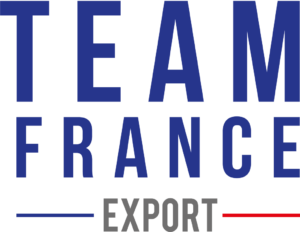Integrating machine vision
Machine vision is the application of computer vision to industrial production and research. For its implementation, a combination of hardware and software provides machine vision systems with operational guidelines for performing their functions, based on image acquisition and processing.
What are the applications of machine vision? What about its components? What are the different types of machine vision?
Machine vision applications
Typically, the machine vision application consists of locating the object or checking the characteristic of a part in the camera’s field of view. This is made possible by geometric recognition technology. The location of the object often determines the success or failure of the action. If geometric recognition software tools fail to locate the part precisely in the image, the machine vision system cannot guide, identify, inspect, count or measure the part.
Locating parts with machine vision
Locating parts in a real production environment can be extremely difficult due to changes in appearance. Machine vision systems learn to recognize parts based on their shape. Nevertheless, the appearance of a part can vary even in the most tightly controlled manufacturing processes.

Guidance
Firstly, machine vision systems can determine the position and orientation of a part. They compare them with a given tolerance and make sure they’re at the right angle to check for correct assembly. Secondly, guidance can be used to indicate the location and orientation of a part in 2D or 3D space to the control system of an industrial robot or special machine. This indication will enable the robot to locate the part, or the machine to align the part.
Identification
A machine vision system for part identification and recognition reads a lot of digital elements. These include barcodes (1D), Data Matrix codes (2D), DPM codes (direct marking) and characters printed on parts, labels and packaging. An optical character recognition (OCR) system reads alphanumeric characters without any prior knowledge. In addition, an Optical Character Verification (OCV) system confirms the presence of a character string.
Measurement
For measurement purposes, a machine vision system calculates the distance between two or more points, or between geometric locations on an object. It determines whether these measurements comply with specifications. If this is not the case, the machine vision system sends a failure signal to the control system. This triggers a rejection mechanism that ejects the object from the line.
Machine vision components
A machine vision system consists of lighting, optics and machine vision processing.
Machine vision lighting
Lighting is one of the keys to achieving satisfactory results in machine vision. Machine vision systems create images by analyzing the light reflected by an object, not by analyzing the object itself. The principle of lighting is to generate a light source and position it judiciously in relation to the room and the camera.
Optics in machine vision
The optics acquire the image and transmit it to the camera’s image sensor. Optics vary in optical quality and price. Consequently, the optics selected determine the quality and resolution of the image captured. Most machine vision cameras feature two main types of optics: interchangeable and fixed. Interchangeable optics are generally fitted with C or CS mounts.
Machine vision processing
Processing is the process of extracting information from a digital image. It can be carried out externally in a PC-based system or internally in a stand-alone machine vision system. Processing is carried out by software and consists of several stages.
1/ An image is acquired using the sensor. In some cases, pre-processing may be required to optimize the image and ensure that all the necessary features stand out.
2/ The software locates the specific characteristics of the part, takes measurements and compares them with the specifications.
3/ A decision is made and the results communicated.
The different types of machine vision
There are three main categories of machine vision systems.
1D vision systems
1D machine vision analyzes a digital signal, one line at a time, rather than the entire image. For example, it evaluates the differences between a group of ten recently acquired lines and an older group. This technique generally detects and classifies defects in materials manufactured in a continuous process. These materials include paper, metal, plastic, foil and non-woven rolls.

Matrix and linear systems
Linear systems offer other advantages over matrix systems. For example, the inspection of round or cylindrical parts may require several matrix cameras to cover the entire surface of the part. However, by rotating the part in front of a single linear camera, the entire surface can be acquired and the image projected. Linear machine vision systems adapt more easily to smaller spaces. For example, when the camera has to pass between cylinders on a conveyor to see the lower part of a part.
3D vision systems
3D machine vision systems generally comprise several cameras, or one or more laser displacement sensors. Multi-camera 3D vision in robot guidance applications shows the robot the orientation of the part. These machine vision systems consist of several cameras mounted at different locations and triangulation on an objective position in 3D space.
Deep Capture, machine vision software
Deep Capture is a software package developed by CIM Atlantique that uses deep learning to enhance the potential of machine vision applications.
ARTIFICIAL INTELLIGENCE
Thanks to deep learning machine vision, our Deep Capture software enables generalized detection based on supervised learning.
ANALYSIS IN
REAL TIME
Our machine vision software enables near-real-time detection. We can achieve a framerate of around 60 fps per camera.
BEST PERFORMANCE
In machine vision, with our deep learning software, we guarantee you the best compromise between: the detection rate of true positives (defects, objects to be identified) and the rate of false positives (false rejects).
SIMPLE AND INTUITIVE
With deep learning machine vision software, mechanical and soft campaign changeover times are virtually non-existent.
TURN-KEY
Our engineers specialized in machine vision take care of the various phases of software development.



